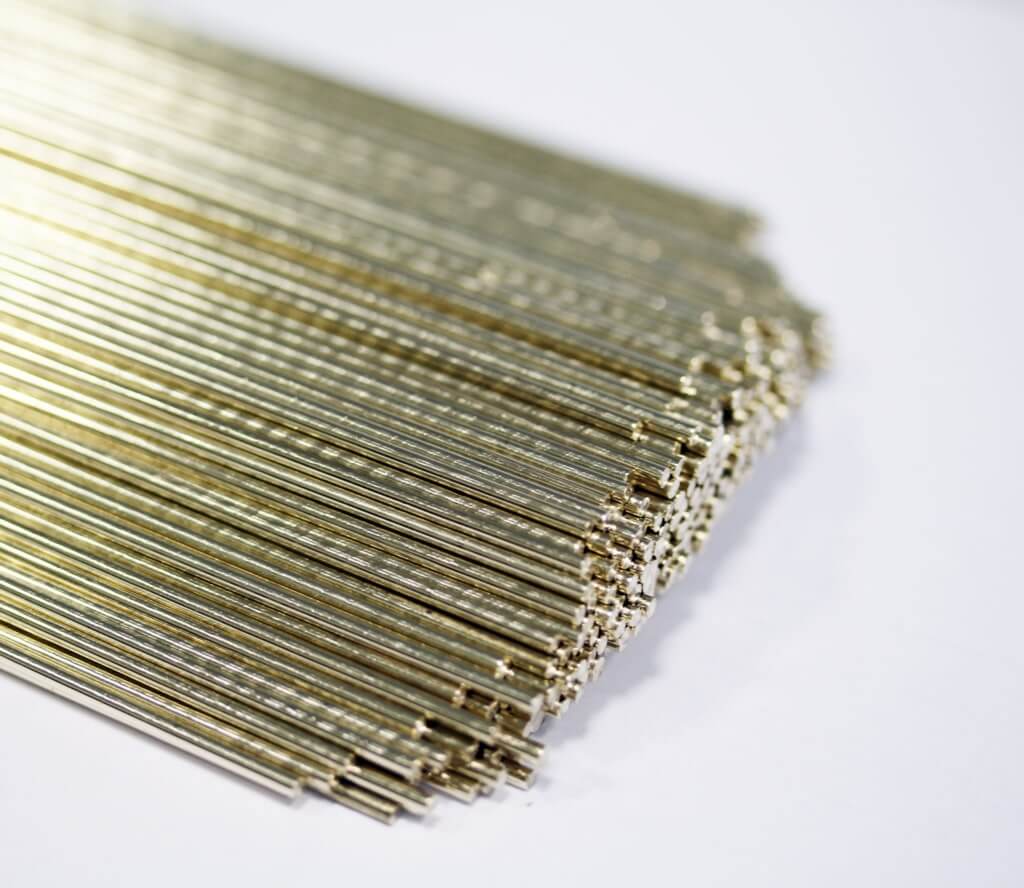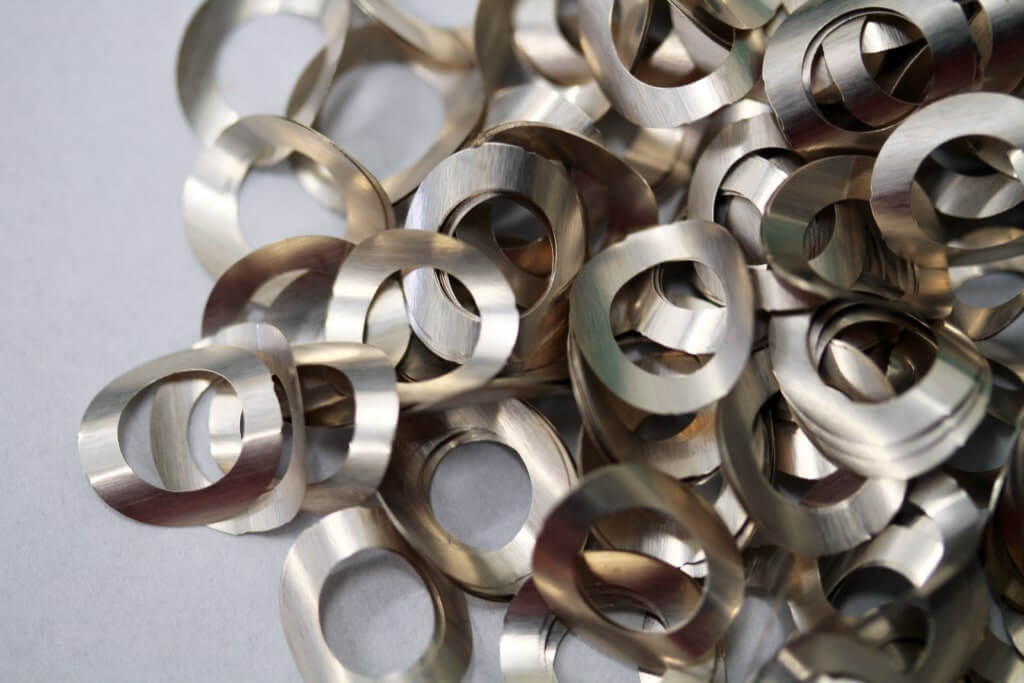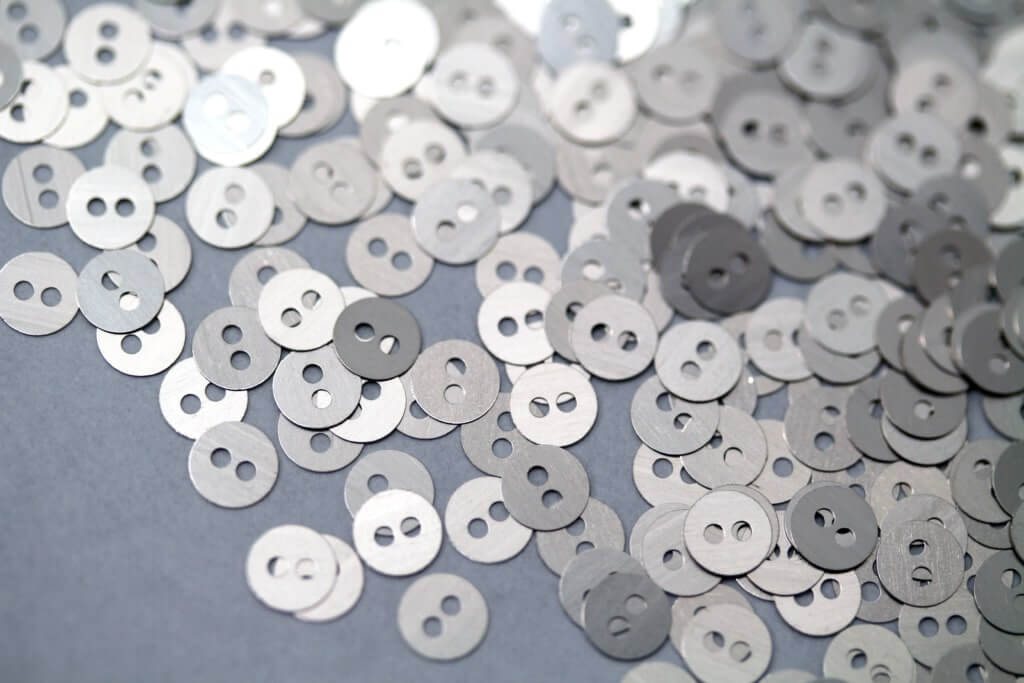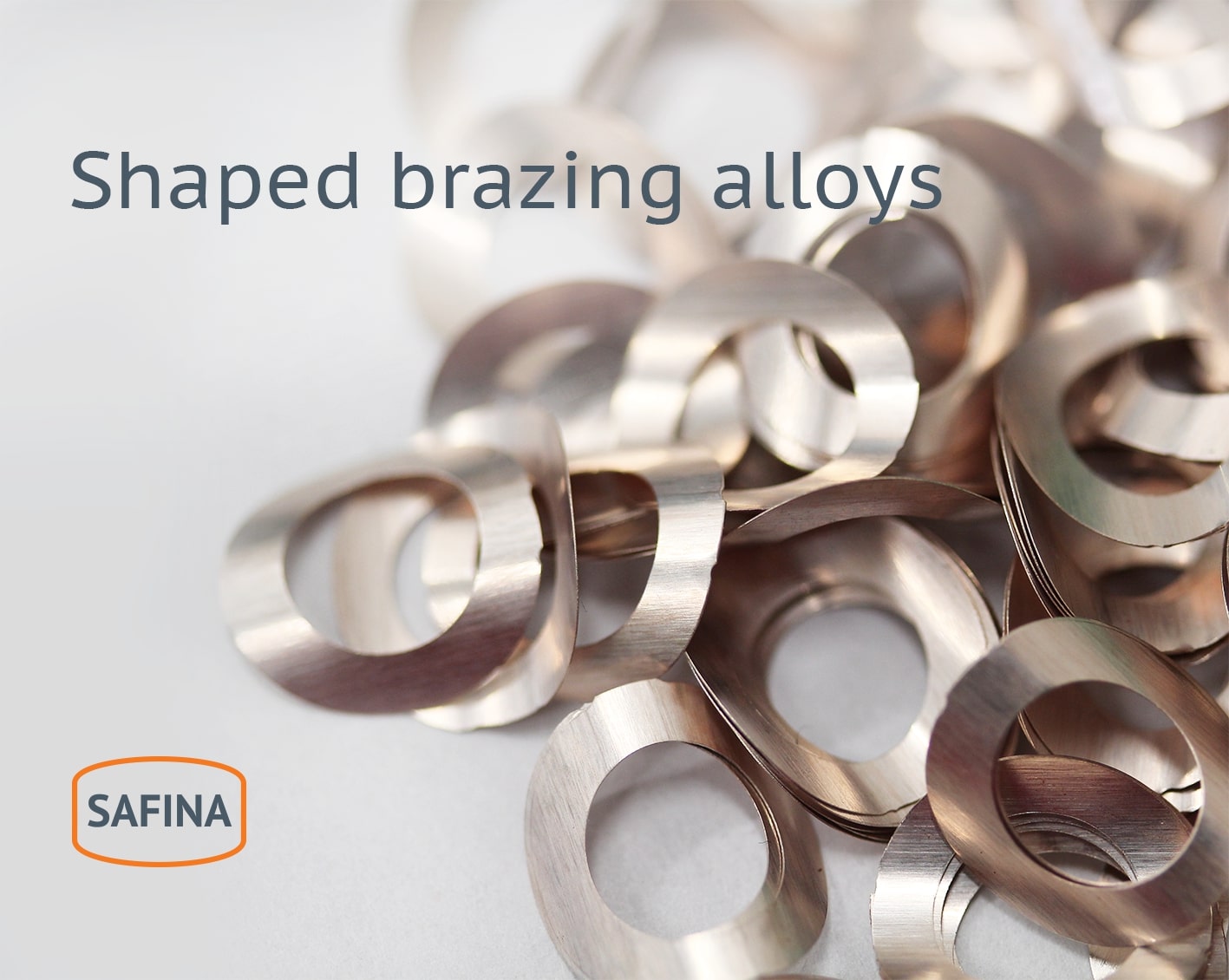Safina, a. s., as a traditional manufacturer with a history of manufacturing industrial applications for over 50 years, which includes mainly the production of brazing alloys, has a number of unique technologies that are used for modern, traditional and innovative products. One of its areas of focus is brazing in a variety of shaped forms.
Brazing alloys
Safina’s production of brazing alloys is based on tradition and years of experience. However, this sector is also evolving and Safina is part of this. Brazing alloys are an integral part of the engineering industry for their properties of higher mechanical and heat resistance in joining materials and parts into complete units. Safina focuses exclusively on the production of brazing alloys, which are defined as an additive material with a melting temperature above 450°C. Nevertheless, the portfolio offered, which corresponds to a wide range of applications in various industries, starts with a melting temperature as low as 600°C.
As Safina is an expert in precious metal processing, it focuses exclusively on silver, palladium and gold brazing parts. Most of the brazing alloys produced conforms to standardized types according to ISO 17672, or supplies abroad according to the American AWS or Air AMS standards.
But Safina also offers special alloys, its own time-tested solder or complete developments for special applications.

Shaped brazing alloys
With the current trends towards mechanisation or automation of the manufacturing process, including the soldering process, brazing alloys made in a variety of moulds and sizes are the ideal solution for the requirements of solder application and its deposition in the final product. Most of these products are then mainly designed for brazing in furnaces, vacuum or under protective atmosphere.

The “preforms” prepared in this way can be called preformed parts or brazing alloys. These preformed brazing alloys are suitable for high quality soldering. They are precision alloy forms that are either made from cut, formed and drawn wire or are pressed from solder sheet (in the form of strip, strips or foil). Preforms are used for a variety of metal joining applications and have become a staple for many manufacturers due to their ease of use, consistency, quality and productivity in metal joining applications. Our precision machining and tooling, including the development of new tooling, allows us to produce molded brazing alloys to a variety of specifications.
Benefits of preformed/shaped brazing alloys:
- Elimination of costly manual feeding
- Precise control of solder alloy volume leads to consistent and cost-effective joints
- Automated soldering
- Uniform wetting and smooth appearance of solder joints
- Reduced or no waste
- Ideal joint fill
- Controlled soldering process to ensure serial/repeatable production
- Significantly reduced occurrence of rejects
If the brazing alloys is to be pre-positioned in the joint, it should be the part of the joint that is the last to reach the soldering temperature. This ensures that when the brazing alloys melts, the molten material will be pulled through the joint by the combined effects of capillary flow and temperature gradient.
Safina manufactures and supplies shaped brazing alloys with predetermined, consistent and uniform shapes that melt at strictly controlled temperatures determined by the solder composition. This set production quality ensures smooth operation on automated soldering equipment. Safina’s preformed shape brazing alloys provide the operator with consistent soldering performance in every application, every batch. Operators no longer need to adjust the heating method from one batch of brazing alloys to another to achieve consistent results. The benefit of this precise control is also very clearly interpreted in automated soldering operations, where tight control of flow temperatures can significantly reduce the occurrence of rejects.
Preformed brazing parts are an excellent solution for connecting electronic circuits and electronic housings (the “electronic packaging” segment). These parts provide good thermal and electrical conductivity and also provide interfaces for electronic connections. The choice of alloy and the geometry and dimension of the solder shape are critical decision points, and SAFINA are experts in the physical and chemical requirements for brazing preformed parts. We are qualified to help customers select the best material for any application.
We offer industry experience in manufacturing preformed solder in a variety of industries, including tight tolerances and varying requirements.

Production process:
- mix preparation + melting –
- continuous casting –
- material processing = finishing of the cast material + rolling/drawing of the wire –
- Preparation of input material for final processing = cutting/shearing/cutting of wire/sheet –
- pressing (sheet metal)/cutting – cutting (wire) –
- cleaning –
- inspection + sorting –
- packaging
In addition to the perfectly managed preparation of the alloy and subsequent processing of the semi-finished material, the production process also requires very precise output of the final products. It is the precision of the tooling that guarantees the serialisation of the individual parts. Precision press tools are used for production, which can guarantee tolerances of 0.05mm on a 1mm diameter disc. Precision tooling using modern wire cutters and development with CAM software is the main element of a perfect final product. As well as other tools such as winding bars and mandrels for the production of precision rings. This, however, is preceded by a perfectly mastered production of the semi-finished product – sheet metal, wire. This requires experience in the melting and casting of the material, as well as a controlled process of rolling or wire drawing, where a winding system is used precisely for perfect solder ring results.
Product forms:
Discs, circular pads, rings, square or rectangular pads, pads, rods, pins, chopped wires, tubes.
Rings
Rings, springs, spring rings. These are rotating rings that are cut in one place. This is the most widely used application. Ring diameter options are wide, depending on the tool, which can be custom made if required. As standard, internal diameters from 2mm to 200mm can be offered, with wire diameters from 0.1mm.
Discs and washers
Whilst rings and other forms of wire manufacture continue to be the most widely used shaped soldering irons for brazing, in recent years there has been an increasing use of washers of various shapes – i.e. discs, circular washers, flat shapes – pads. Part of this increase can be attributed to the rise of the electronics industry, where most soldering is done in atmospheric furnaces without flux. Components are small and lightweight, and therefore allow only minimal displacement within the embedding. Many such components have irregular shapes that can only be joined by a suitable pad shape. The thickness of the pads starts at 0.05mm depending on the solder material. The smallest diameter of the washer then depends on the capabilities of the tool, but most often 0.5mm
Pins, split wires
Pins, pellets or straight wires are becoming more common with the trend towards automation and are finding use as a suitable option for shaped solder joints in components when moving from standard to automatic production. We produce pins, pellets and split straight wires in diameters of 0.5-3.0mm in lengths of 3-500mm. Production and cutting technology is different – cutting, shearing, stuffing.
Tubes and other shapes
For some special applications, other shapes such as tubes or various bent, curved or otherwise shaped brazing parts are suitable. Tubes are most often used in longer joints where a full-length guide element needs to be connected to the base, so where a circular washer is not sufficient. Electrodes or various types of sensors are common applications. General tube dimensions are outer diameter from 1.5 mm with wall thickness from 0.20 mm. The diameter and wall thickness options depend on the solder alloy.
While rings and other wire forms continue to be the most widely used preforms for brazing alloys, there has been an increasing use of pads, discs, washers and other flat shapes in recent years. Part of this increase can be attributed to the rise of the electronics industry, where most soldering is done in atmospheric furnaces without flux. Components are lightweight and therefore allow only minimal movement; slower heating cycles increase alloying and inhibit flow; many components have irregular shapes that can only be aligned by blanking.
Materials:
Almost the entire range of brazing parts can be made to a suitable shape. However, it is for use in vacuum furnaces or inert atmosphere furnaces that brazing alloys are most commonly used.
One of the earliest brazing alloys is Ag72Cu, which has a very wide range of applications. Or Ag55CuZnSn solder for the chemical industry. For electronic housing systems, automotive or special sensors, palladium brazing alloys such as Ag65Pd15Cu or Ag68.4Pd5Cu or even nickel alternatives Ag56CuNi2 are very popular. For the production of electrodes or tools and hard-metal components, manganese-nickel brazing alloys, e.g. the special Ag64MnNiIn brazing alloys, is suitable.
The most common areas of application:
Automotive, electronics, energy, engineering, sensors, semiconductors.
Most common applications:
Electronic circuits, electronic packaging, diodes, vacuum tubes, electrodes, sensors, semiconductor components, tool, cutter and drill production.

